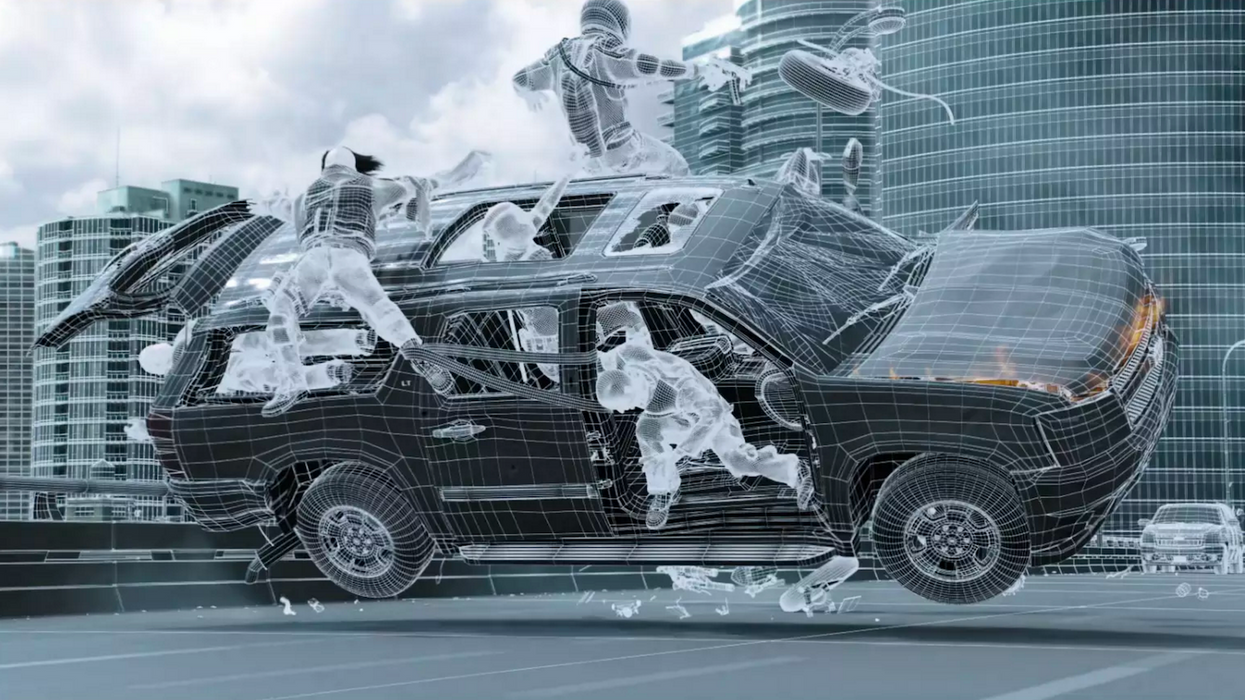Constructing Mayhem: How They Pulled Off the Insane VFX of 'Deadpool'
It took the collaboration of several studios to pull off this year's best visual effects.

Too often with recent entries into the superhero canon, it feels like we're being ruthlessly beaten over the head by CGI effects. This year, Tim Miller's Deadpool proved the rare exception. Watching the film, the VFX blend seamlessly into the action and go virtually unnoticed. And this wasn't any accident.
Prior to his big screen debut in February, Miller's day job had been running the VFX company Blur Studios with his friend and visual supervisor David Stinnett. The award-winning company is responsible for effects in projects ranging from the intergalactic sequences in Avatar, to critically acclaimed game trailers, to the abstract black-on-black opening titles inThe Girl with the Dragon Tattoo. They even worked on a Disney Marvel movie before switching over to Fox, heading up the three-minute prologue sequence that sets the stage for Thor: The Dark World.
To put it simply, Miller knew how important the quality of the VFX would be to Deadpool's success.
James Cameron's 'Avatar'
Miller valued the VFX of production so much that he knew he couldn't pull it off alone. He brought together an all-star group of visual effects vendors, including Digital Domain (X-Men: Days of Future Past, Speed Racer), Luma Pictures (Guardians of the Galaxy, Ant-Man), Rodeo FX (Game of Thrones, Pacific Rim), Ollin VFX (Her, The Curious Case of Benjamin Button), Image Engine (Jurassic World, Fantastic Beasts and Where to Find Them), Atomic Fiction (The Walk, Stark Trek: Beyond) and Weta Digital (Batman vs. Superman, The BFG). Each of these vendors was then assigned various responsibilities while Blur Studios acted as the managerial hub. Weta, for example, was responsible for Deadpool's face, while Atomic Fiction took on the highway chase scene in the beginning.
Thanks to their efforts, our suspension of disbelief is held in check throughout the entire film. We're never drawn out of the "Merc" with a Mouth's world due to cheaply produced effects; instead, the ridiculous action sequences somehow seem totally plausible. One such action sequence — arguably the best in the film — is broken down layer by layer in this behind-the-scenes video released by the visual effects studio Atomic Fiction.
The studio attributes its success with the Deadpool sequence to a cloud rendering platform they developed in-house called Conductor. In an interview with Art of VFX, they explain:
"All of Atomic Fiction’s heavy rendering is done with ConductorIO, a cloud rendering platform we developed for internal use, and have since spun off as a stand-alone company. On Deadpool, 7 million core hours were rendered in the cloud. 80% of the rendering on Deadpool occurred in just 8 weeks of the 36-week schedule, with one single week accounting for about 20%. This really demonstrates how important it is to be able to scale resources up and down. Another way to look at it is that we would have needed a local render farm of around 32,000 cores to get through that one week. That’s a lot of horsepower for any size company, let alone a mid-sized studio like Atomic Fiction."
On their company website, Atomic Fiction offers a beta version of the software which they define as "cloud rendering."
"It encompasses the entire rendering workflow from end to end, managing uploads and downloads, queuing, security, and cloud resources with unmatched performance and efficiency," the description reads. Some of the features include:
- The most widely-used 2D & 3D applications supported
- Scales massively; stays fast as workloads grow
- Integrates into custom pipelines
- Enterprise-grade cloud security from end to end
- Real-time cost tracking and management
- Automated data de-duplication for faster file transfers
- State-of-the-art cloud technologies built in at the core level
- Pay one all-inclusive price for what you use, by the minute
- Improve productivity by 20%; reduce rendering costs by 50%
If you're an aspiring VFX designer, you may want to register and check it out. For an even more intense breakdown of the highway chase scene, be sure and check out The Art of VFX's interview with Ryan Tudhope, Co-Founder & VFX Supervisor of Atomic Fiction.












